Wine has been around for as long as history itself. We know is wine pre-dates writing. We also know of wine production that took place roughly 8,000 years ago. What we don’t know is the exact date when humans started drinking wine. But it’s safe to say it was a long time ago.
Because of its long history, there’s countless stories that can be told about how wine has affected many some of the world’s biggest characters. Here at Conclusion Wines, we’re based in the United States so we thought it’d be fun to look at some U.S.-based history about wine you may not have heard.
James Monroe: Misappropriated Funds
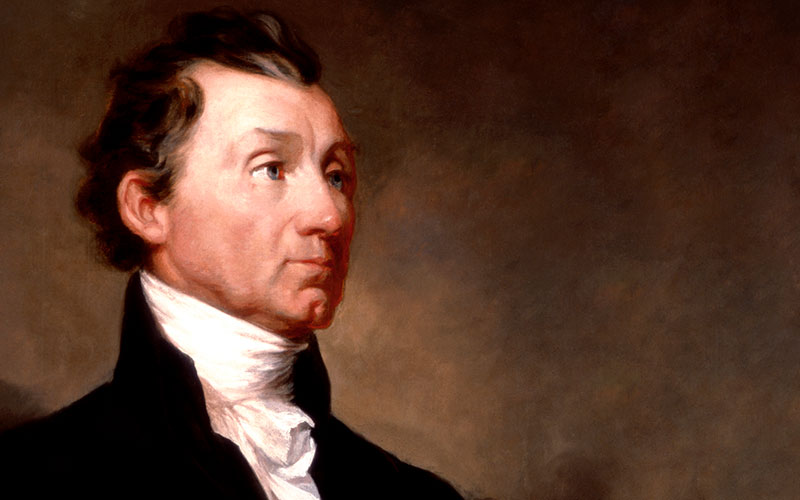
James Monroe’s family were French immigrants who had moved to Virginia in the 1700s, before the United States was an independent country. He spent his own time in France when he was the United States’ fifth Ambassador to France in a short list that included both Benjamin Franklin and Thomas Jefferson.
Whether it was his time in France, his French heritage or none of the above, James Monroe was a fan of French style items. Then, in 1817, James Monroe became the fifth President of the United States at the age of 58. One slight problem, though. Just a few years before, the White House had been set fire by British troops. While repairs had begun, it was an empty house.
So one of the first things he got to work doing was to customize the White House with French styled furniture and decorations. Congress gave Monroe a budget of $50,000 to buy new furniture. That’s about $1.17 million in 2016 dollars.
Being President, though, Monroe was too busy to do it all himself. So he put a man by the name of Samuel Lane in charge of finding and purchasing the furniture for the White House. It was a good idea, but unfortunately it didn’t work out for President Monroe. Samuel Lane kept coming back for more money, and before long the $50,000 was used up. President Monroe then started funding the furniture from his own account.
On August 8th, 1822, Samuel Lane passed away rather unexpectedly. When he did, President Monroe found out the extent of the damage. It would seem among the French furniture, Samuel Lane had imported something else from France. Over 1,200 bottles of wine from Burgundy and Champagne. To add insult to injury, Lane had used the money from Congress to buy the wine. After an investigation, Congress determined the fault lay solely at the feet of Samuel Lane’s poor decision making and bookkeeping.
Still, James Monroe never fully recovered from having to spend his own money on furniture. After serving eight years in the White House, Monroe retired from public service to a life without any money. In 1830, he was forced to sell his plantation and move in with his daughter in New York. He died the following year without ever fully recovering from the financial fiasco.
Richard Nixon: Saving the Best for Me
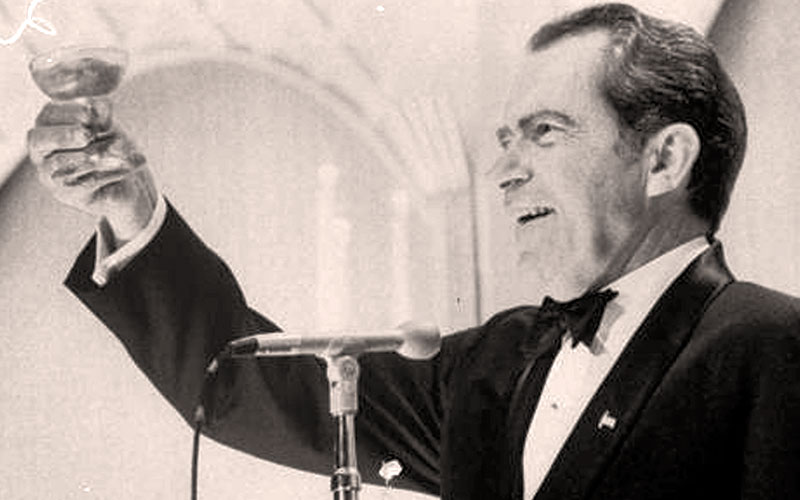
Richard Nixon first earned the nickname “Tricky Dick” during his 1949 campaign for the U.S. Senate. It was a title his opponents gave him for his sneaky tactics during the voting campaign. They were tactics that would ultimately win him not only the Senate, but later land him the highest office in the country.
President Nixon entered the White House during a crucial point in United States history—the Vietnam War. As a President during wartime, Nixon played host to many foreign diplomats.
As the 37th President of the United States, Richard Nixon didn’t shy away from the expensive wine at these dinners and parties. Chateau Lafite Rothschild is considered by many to be one of the finest wine producers in Bordeaux. And as some of the more expensive Bordeaux wines, their bottle prices often match this distinction. For Nixon, it was a 1957 vintage that piqued his tastes.
While he was open with the wine being poured into his own glass, he told the servers to cover the bottles with a towel when they served the guests. Why? Underneath the towel the bottle wasn’t a Chateau Lafite Rothschild, but a much cheaper wine.
According to the book Mint Juleps with Teddy Roosevelt: The Complete History of Presidential Drinking, the term “pulling a Nixon” came from this sneaky switch.
Thomas Jefferson: Know What You're Buying
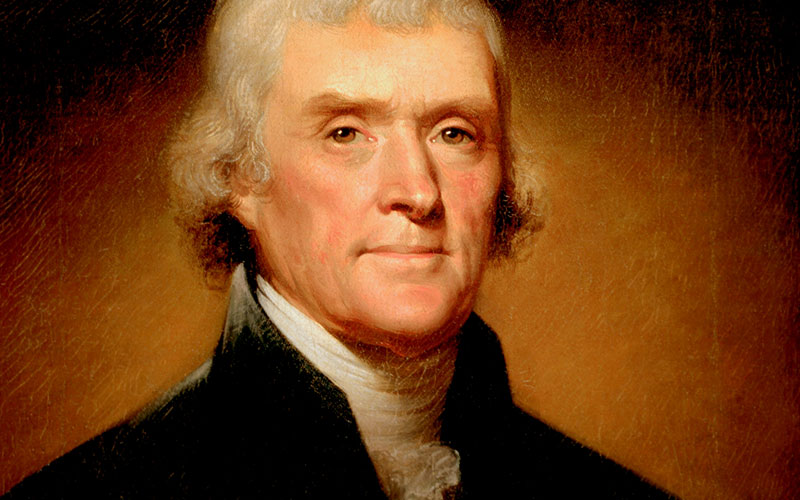
There’s a lot of documentation on the third President of the United States’ love affair with wine. In fact, after Jefferson secretly spent three months touring over a thousand miles of French and Italian wine country in 1787, he started importing wines from overseas, becoming one of the first Americans to do so on a massive scale. Although he provided George Washington with wine as well, many historians estimate Jefferson went through about 400 bottles of wine a year.
Over a 150 years after Jefferson passed away, Christie’s put up a few bottles from Thomas Jefferson’s own collection. The bottles were verified by glass experts, who said the dark-green handblown glass and simple engravings on the bottle were authentic to the 18th century French style. The engravings simply said “1787”, “Lafitte” and “Th.J.”
As a quick side note, “Lafitte” refers to the same Chateau Lafite Rothschild that Richard Nixon liked. The Chateau used to be spelled with two “t’s” and wasn’t owned by the Rothschild family until the 19th century.
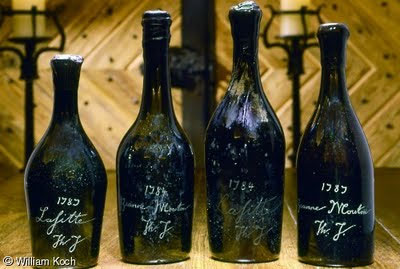
To say these bottles were rare was an understatement, and Christie’s had a hard time putting a value on the bottles, officially listing them as “inestimable”.
The bottles went up for auction on December 5th, 1985. One bottle went to Christopher Forbes for $157,000. That’s approximately $353,000 in 2016’s dollars. The auction ended without any others selling, but they would soon sell. A couple years later, another bottle went for an undisclosed amount to an anonymous Middle Eastern businessman. In 1988, American billionaire Bill Koch bought four of the bottles for an amount that’s been estimated to be between $50,000 and $100,000 per bottle.
Unfortunately, it’s entirely possible the wine isn’t really from Thomas Jefferson’s cellar. According to The New York Times, this came to light when Koch tried to exhibit the items at the Boston Museum of Fine Arts. As is their requirement, the museum asked Koch for verification of the wine’s authenticity. Koch didn’t have anything other than what Christie’s had given him; their own authentications. In an attempt to get further verification, Koch reached out to the Thomas Jefferson Foundation, who cast doubt onto the authenticity when they claimed the bottles weren’t from Jefferson.
Koch went on 20/20 to explain the whole ordeal, a segment you can watch here.
With wine’s colorful history, these are but a small portion of the stories that can be told surrounding wine and its impact on the world. Hopefully you’ve learned something new or are enticed to start learning more about these and other stories. Do you have a favorite story about wine’s impact on world history to share? Let us know in the comments before, or by reaching out on Facebook or Twitter.


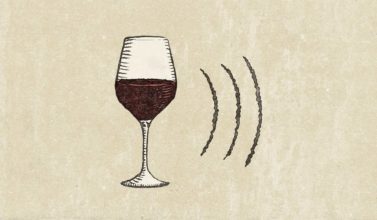

Leave a Comments